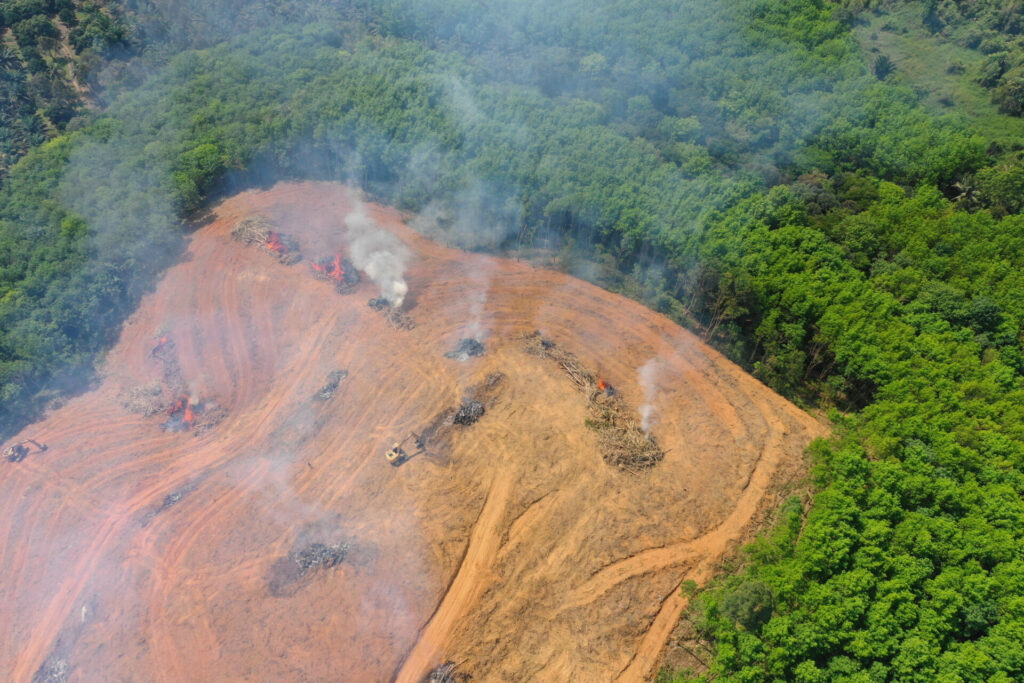Deforestation of the Amazon, the world’s largest tropical rainforest, reached a record high in the first six months of this year as an area five times the size of Bahrain, was cleared of trees.
From January to June, 1,540 square miles of forest – home to one in ten known species – were destroyed, according to Brazil’s national space research institute Inpe.
That is an increase of 10.6 per cent from last year, and the highest level for that period since monitoring began some 15 years ago.
The vast majority of the destruction is caused by slash and burn methods that see farmers cut down trees and set fire to timber and vegetation in order to clear the land for agricultural use.
During August and September these fires can frequently rage out of control as the forest is at its driest.
Globally a study has revealed that destroying woodland for agriculture is the main cause of a 60 per cent decline in the world’s forests between 1960 and 2019.
In the past, the rainforest remained damp all year long and resisted fires. However, global warming, resulting in rising temperatures and drier conditions means many areas are now suffering as a consequence. Since 2000, rainfall has declined across 69 per cent of the area.
Manoela Machado, Wildfire and Deforestation researcher at Oxford University, said: ‘We have a combination of a drier climate with more motivation to deforest. So this is extremely bad news.’

According to the World Wildlife Fund, more than a quarter of the forest will be devoid of trees by 2030, if destruction continues at the same speed, and an estimated 40 per cent will be razed by 2050.
Global Deforestation
Forests are home to more than three-quarters of the world’s people and wildlife. They play a critical role in reducing climate change acting as carbon sinks—soaking up carbon dioxide that would otherwise be released into the atmosphere and contributing to climate change. They are also crucial to curbing biodiversity loss.
But around the world this precious resource is under threat.
According to the United Nations, large-scale commercial agriculture, primarily cattle ranching and cultivation of soya bean and palm oil, accounted for 40 per cent of tropical deforestation between 2000 and 2010, and local subsistence agriculture for another 33 per cent
Elswhere a study has revealed that destroying woodland for agriculture is the main cause of a 60 per cent decline in the world’s forests between 1960 and 2019.
Illegal logging is also a major factor in the global loss.
The study led by Ronald Estoque from the Center for Biodiversity and Climate Change, Forestry and Forest Products Research Institute (FFPRI) found a total forest decline by 81.7 million hectares since 1960.
It calculated global gross forest loss reached 437.3 million hectares, which outweighed a gain of 355.6 million hectares during that time.
This is combined with an increasing population of around three billion in 1960 to 7.7 billion in 2019.
‘The continuous loss and degradation of forests affects the integrity of forest ecosystems, reducing their ability to generate and provide essential services and sustain biodiversity,’ the study stated.
‘It also impacts the lives of at least 1.6 billion people worldwide, predominantly in developing countries, who depend on forests for various purposes.’
Globally, forests cover around one third of the Earth’s surface and are home to more than 60,000 tree species, provide habitat to about 80 per cent of all amphibian species such as lizards and frogs, 75 per cent of bird species and 68 per cent of mammal species.













